In a tradition that continues to inspire, FEDIL recently hosted its 12th annual “Digital & Innovation Study Trip”. This year, a high-level delegation comprising representatives from private enterprises, public institutions, academia, and research travelled to Northern California. The delegation engaged with some of the world’s leading names in the fields of Internet and Artificial Intelligence to learn more about the pressing challenges and cutting-edge technological advances. On the agenda: Google Cloud, Lyten, Nvidia, Paypal, Cloudflare, Microsoft, OpenAI. The delegation also visited Stanford University to discuss « Safety in AI ». In addition, the delegation hosted a networking reception with the local Luxembourg community.
Google Cloud




The delegation began their Silicon Valley tour with a visit to Google Cloud Space, where they gained valuable insights into both Generative AI (GenAI) and Google Distributed Cloud (GDC).
A member of Google’s engineering team, specializing in GenAI, gave an in-depth presentation on Google’s approach to collaborating with key clients and partners to define their AI vision and strategy. He emphasized that AI will increasingly influence all aspects of life, particularly Generative AI, which will revolutionize human-computer interaction with significant implications for telecommunications, healthcare, and education. He illustrated this with examples such as personalized virtual doctors and tailored educational tutors.
He stressed that AI should be seen as a tool to enhance human life rather than a threat to jobs. He traced Google’s AI journey back to 2015, when Sundar Pichai became CEO and pivoted the company to an AI-first approach. This strategic shift embedded AI deeply into Google’s operations rather than treating it as an add-on feature. Google has solidified its position in the AI market through continuous innovation and investment, including the merger of DeepMind and Google Research, now a combined force of 3,000 AI researchers.
A landmark moment for Google AI came in 2017 with the publication of the « Attention is All You Need » paper, which laid the foundation for the transformer models that power today’s AI ecosystem, including ChatGPT. Responsible AI is at the core of Google’s operations. The company was the first to publish core AI principles in 2018, which guide ethical AI development and data management.
The delegation learned about Google’s BeyondCorp initiative, which addresses both internal and external data security threats, emphasizing that Google’s business model depends on robust data protection. Google also showcased its earthquake notification system, illustrating how rapid technological evolution and feedback-driven development can improve security.
While conversational AI is not new, there have been significant advances in language modeling, enabling better predictive capabilities. The importance of representative data to mitigate bias in AI systems was highlighted, emphasizing responsible AI practices. Google Cloud AI offers a platform for users to customize AI models rather than selling models directly. The infrastructure layer, featuring custom TPUs (Tensor Processing Units), supports this platform.
The delegation also explored Google’s Distributed Cloud. Google offers different levels of sovereignty to meet customer requirements, ranging from Public Cloud to Sovereign Controls, Trusted Partner Cloud, and Google Distributed Cloud. Google Distributed Cloud, featuring an air-gapped option and a partner-operated model, is designed to support public sector and regulated industries that need to meet the strictest sovereignty regulations, including ensuring data residency, controlling operational staffing, and minimizing jurisdictional risks.
The visit also highlighted the collaboration between Proximus and LuxConnect with Google, which aims to launch a disconnected sovereign cloud in Luxembourg using Google Distributed Cloud Hosted technology through the Joint Venture Clarence, set to go live next November.
The delegation concluded their visit with a tour of the Experience Center, where they saw demonstrations of Google’s AI tools in action.
Lyten

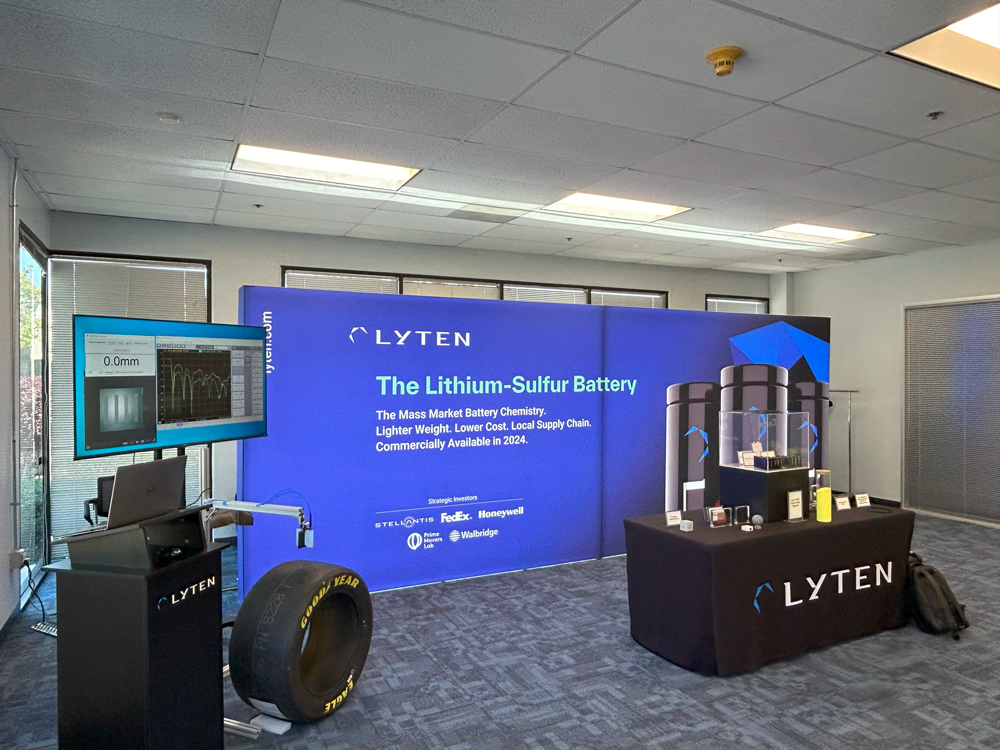
During their second stop in Silicon Valley, the delegation visited Lyten’s headquarters, where they were welcomed by two of the company’s co-founders, Dan Cook and Lars Herlitz, and their team.
The visit included a tour of the plant, where the delegation received a detailed explanation of the manufacturing process for Lyten’s flagship product, 3D graphene.
Founded in 2015 following the discovery of 3D graphene, Lyten specializes in supermaterial applications. Its 3D graphene can be transformed into high-value, disruptive applications, showcasing the innovative potential of this advanced material.
What is 3D graphene? (source: Lyten’s website)
Lyten’s 3D Graphene is a material unlike anything else on earth. Our 3D Graphene offers unique resistive, capacitive, inductive, structural, and energy absorbing properties that can be infinitely tuned to deliver profound results. We create our 3D Graphene by converting greenhouse gases into solid carbon and hydrogen gas. While the hydrogen gas will be captured for re-use as a clean fuel, the carbon is permanently sequestered in the form of a three-dimensional supermaterial. We call this solid carbon-based material Lyten 3D Graphene™. Because Lyten 3D Graphene is tunable, it can be engineered at the atomic level to bond with other elements on the periodic table. This can optimize thermal and electrical properties, or customize porosity to improve strength and stiffness, decrease weight, and much more.
Lyten has successfully developed a strong, lightweight, and highly malleable material with infinite properties compared to the graphene currently available on the market. This material can be given many forms and shapes. Unlike other graphene companies, Lyten focuses on specific practical use cases and applications rather than marketing the graphene material itself. Leveraging the extensive properties of their 3D graphene, Lyten has established partnerships with various companies in diverse sectors, including Stellantis, FedEx, Honeywell, Wallbridge, Nokia, and the European Investment Fund.
Lyten targets three primary areas of application: Electrification, Lightweighting, and Sensing. The delegation was introduced to four Lyten products, either available on the market or nearing market launch :
- Lithium-Sulfur (Li-S) Battery: The first product using 3D graphene is the Lithium-Sulfur (Li-S) battery. This mass-market battery features high energy density and a lightweight design. The primary purpose of this battery is to electrify various transportation modes, including electric vehicles (EVs), aviation, aerospace (drones), space (satellites), and mobile devices (e-bikes, scooters).
- Lyten 3D Graphene IoT Sensing Platform: The second product in the sensing area is the Lyten 3D Graphene IoT sensing platform. It comprises three distinct sensing technologies based on 3D graphene: multigas & vapor sensor, biological sensor, and resonant infrastructure sensor. Potential markets for these sensors include battery safety, explosives detection, supply chain and critical infrastructure monitoring, and aircraft cabin air quality.
- Infrastructure Monitoring: The third product, also in the sensing area, serves infrastructure monitoring. Lyten can create an ink from graphene and print it on any surface. This structure can provide environmental information to measure stress constraints or vibrations and is of interest to the tire industry and other sectors requiring infrastructure monitoring.
- Green Concrete: The fourth product in the lightweighting program is green concrete. Concrete is the second most used material on earth and contributes significantly to greenhouse gas emissions, primarily from cement. By adding 3D graphene as an additive to liquid concrete, Lyten aims to increase the final product’s strength and reduce its water permeability, reducing the overall need for cement, and thus the gas emissions.
In October 2023, Lyten signed a Memorandum of Understanding (MOU) with the Luxembourg government to establish its European headquarters in Luxembourg. The company is currently exploring potential areas of collaboration and developing use cases with the country.
Nvidia
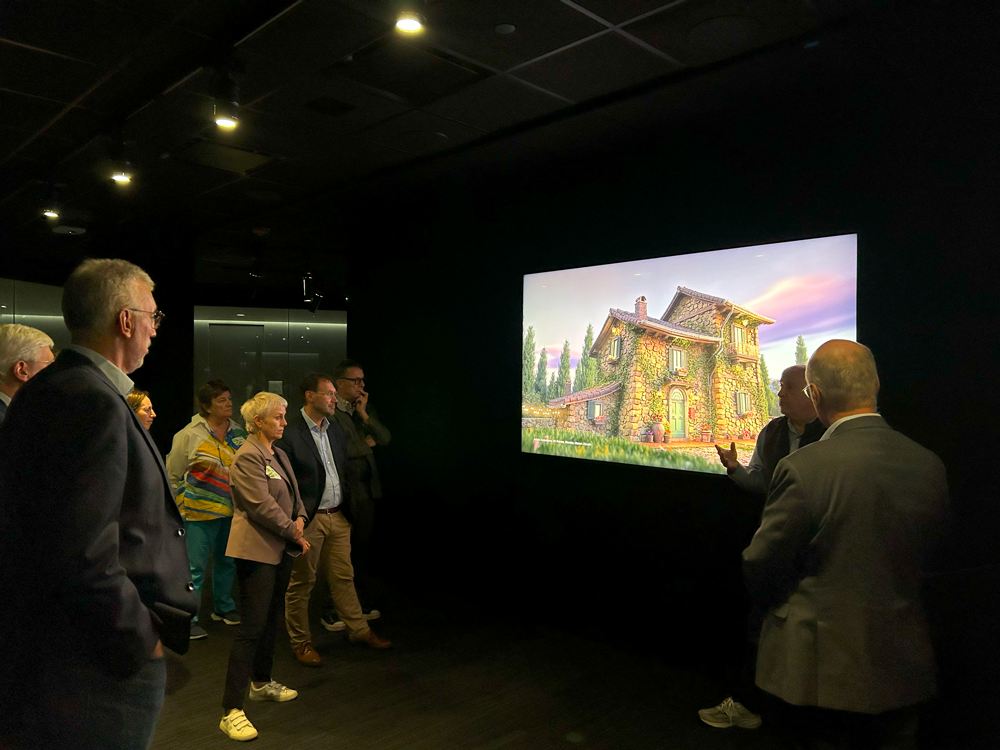
On the second day of the Silicon Valley visit, the delegation met with representatives from NVIDIA.
NVIDIA is known not only for its chips and supercomputers but as a comprehensive AI full-stack company, ranging from embedded chips in smart cameras and robots to GPUs in data centers and the cloud. The company partners with every major cloud provider.
A key topic of discussion was the growing need for sovereign AI, driven by the massive development of Generative AI (GenAI). NVIDIA is actively working with governments to establish sovereign AI infrastructure and cloud solutions.
From a green transition perspective, NVIDIA is focused on enhancing infrastructure performance. This involves improving performance per Watt in new GPU architectures, reducing the power footprint while maintaining intelligence and data processing capabilities. Recently, CEO Jensen Huang confirmed that an upcoming iteration of NVIDIA’s server family will feature liquid cooling. Additionally, NVIDIA uses digital twins of its data centers to optimize thermal and airflow management.
NVIDIA has established several programs to accelerate the global AI journey. On the research front, its engagement programs aim to raise awareness and build a community in the research space. The NVIDIA AI Technology Center focuses on creating impactful research, applying findings to NVIDIA solutions and services, sharing resources and code, and offering hands-on experience with technical demos.
Upskilling is another priority for NVIDIA, encompassing educational programs for students and workforce training at the Deep Learning Institute. Open hackathons and bootcamps are also used to upskill students and researchers.
For the industry, NVIDIA offers a virtual accelerator for startups through the NVIDIA Inception program. This free program helps startups develop faster by providing cutting-edge technology, opportunities to connect with venture capitalists, and access to the latest technical resources from NVIDIA.
The visit concluded with a tour of the EBC demo center, where the delegation witnessed NVIDIA’s transformative work in healthcare and life sciences, transportation, financial services, and manufacturing. The demonstrations highlighted the practical applications and potential of NVIDIA’s AI technologies across multiple industries, reinforcing the company’s leadership in driving AI innovation through a comprehensive approach.
PayPal

At PayPal’s headquarters, the delegation explored the company’s evolution and its current initiatives in the financial and technology sectors. Originally founded as a payments company, PayPal expanded its financial services portfolio through a series of acquisitions. The COVID-19 pandemic in 2020 accelerated the growth of e-commerce, positioning PayPal as a full-stack platform serving merchants and consumers worldwide. The company aims to revolutionize the future of commerce and in 2023 launches PYUSD, a stable coin designed to mitigate cryptocurrency volatility. In mid-2023, Alex Chriss assumed the role of CEO.
PayPal provides proprietary payment solutions that enable customers to complete transactions seamlessly. The company operates a global, two-sided network at scale that connects merchants and consumers.
The platform helps consumers manage and move money both domestically and internationally, offering credit and installment payment services that are accessible and cost-effective. It facilitates secure payments across various devices and provides flexible payment options globally, including online payments, subscriptions, P2P transfers, remittances and installments.
For merchants, PayPal powers all aspects of digital checkout, both online and in-store. It provides access to credit solutions to foster growth, protects against fraud, and improves risk management. In addition, PayPal offers tools and insights to attract new customers and boost sales. Merchant services include receiving payments online and in-store, SME lending in seven European markets and debit card solutions.
PayPal’s five strategic growth priorities are to 1) become the world’s payments provider; 2) extend daily usage beyond payments by offering value-added services; 3) deliver AI-driven personalization at network scale; 4) innovate the future of commerce; and 5) integrate the One PayPal Platform.
A key focus of the discussion was data management and privacy. PayPal is striving to comply with all relevant regulations given the breadth of its activities. The company started its journey by defining the risk categories. In fact, data is associated with technology risk along with the privacy concern. The company has adopted a principles-based approach to data management, including:
- Management: Clear roles and responsibilities for data collection, processing, storage, and sharing.
- Notice & Transparency: Transparency about data practices.
- Choice & Consent: Providing meaningful choices to customers and employees on data practices.
- Security: Protecting personal data and notifying affected customers and employees in case of breaches.
- Data Life Cycle Management: Considering end-to-end data management.
- Data Quality: Maintaining accurate and relevant data and providing access to personal data.
- Stewardship and Standardization: Ensuring responsible data use.
In light of the EU AI Act, PayPal has developed the Five Principles of Responsible AI: Privacy, Security, Fairness, Explainability and Transparency. These principles ensure the coordinated and ethical AI deployment and use of AI across the company.
At PayPal, AI is used through machine learning models to automate processes, covering the full spectrum of the user journey and product lifecycle. This includes improving the customer experience, detecting fraud, assessing creditworthiness, and ensuring regulatory compliance. Over the past year and a half, PayPal has invested in Generative AI for customer support, assisting in payment authorizations without human intervention.
The visit to PayPal’s headquarters provided valuable insights into the company’s approach to financial technology, its strategic growth priorities, and its commitment to data privacy and responsible AI. Leveraging its extensive consumer and merchant data, PayPal continues to enhance customer experience through personalized AI-driven recommendations and innovative solutions.
Cloudflare
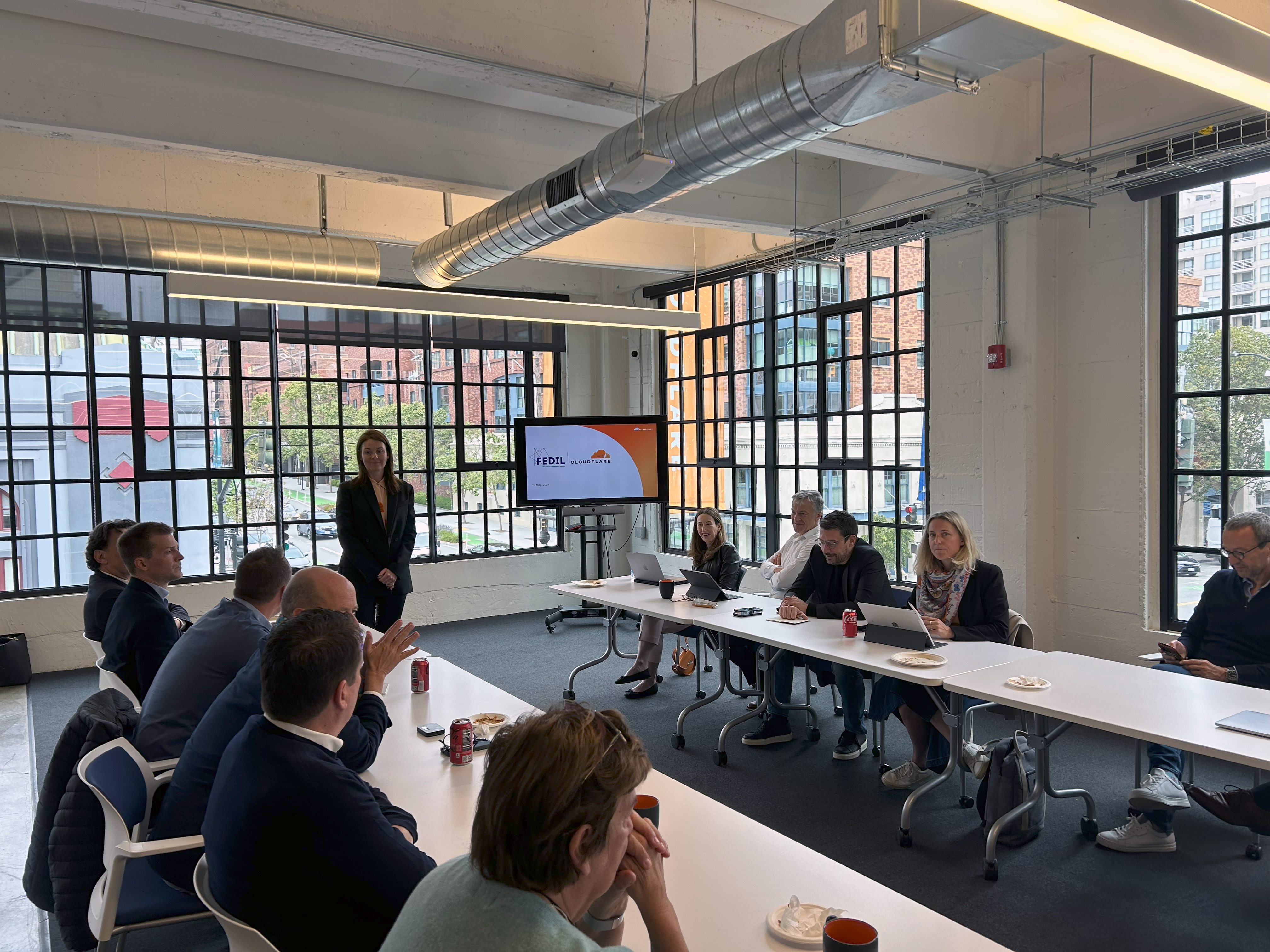
Back in San Francisco city, the delegation started their third day with a meeting at Cloudflare, hosted by one of the company’s co-founders Michelle Zatlyn. She shared that the company’s journey began almost 14 years ago and has since become a Silicon Valley success story, going public four and a half years ago. Today, Cloudflare has 3,700 employees.
Cloudflare operates on a subscription-based model known as SASE (Secure Access Service Edge). The company’s key differentiator is its unique global network, distributed across 320 cities in 120 countries, protecting 20% of the internet. For instance, the day before the visit, Cloudflare successfully thwarted 200 billion cyberattacks. The company already serves over a hundred customers in Luxembourg, Belgium and the Netherlands, with 53 data centers across Europe. Notably, 5% of all traffic into Luxembourg is identified as attack traffic and is blocked by Cloudflare.
Recognized as the world’s first integrated connectivity cloud, Cloudflare provides a unified layer for connecting users, networks, apps, and clouds globally. It ensures the protection of data, apps, infrastructure, and users everywhere while enabling innovative digital services and experiences anywhere with security, speed, programmability, and resiliency.
Cloudflare’s connectivity cloud helps customers regain control, improve visibility and security, and consolidate vendors to reduce costs.
During the visit, the delegation was briefed on Cloudflare’s regional services, launched six years ago. The company outlined its focus areas for 2024: providing control and visibility across the entire surface area, including employees, applications, and networks; building role-based access controls for large organizations with many administrators; simplifying connectivity with customizable networking and a broader range of integrations and on-ramps; and leveraging data intelligence from processing trillions of requests across more than 30 million domains.
Cloudflare is also actively engaged in research through Cloudflare Research, tackling cross-functional challenges such as application privacy, internet infrastructure, applied cryptography, and network privacy.
Microsoft
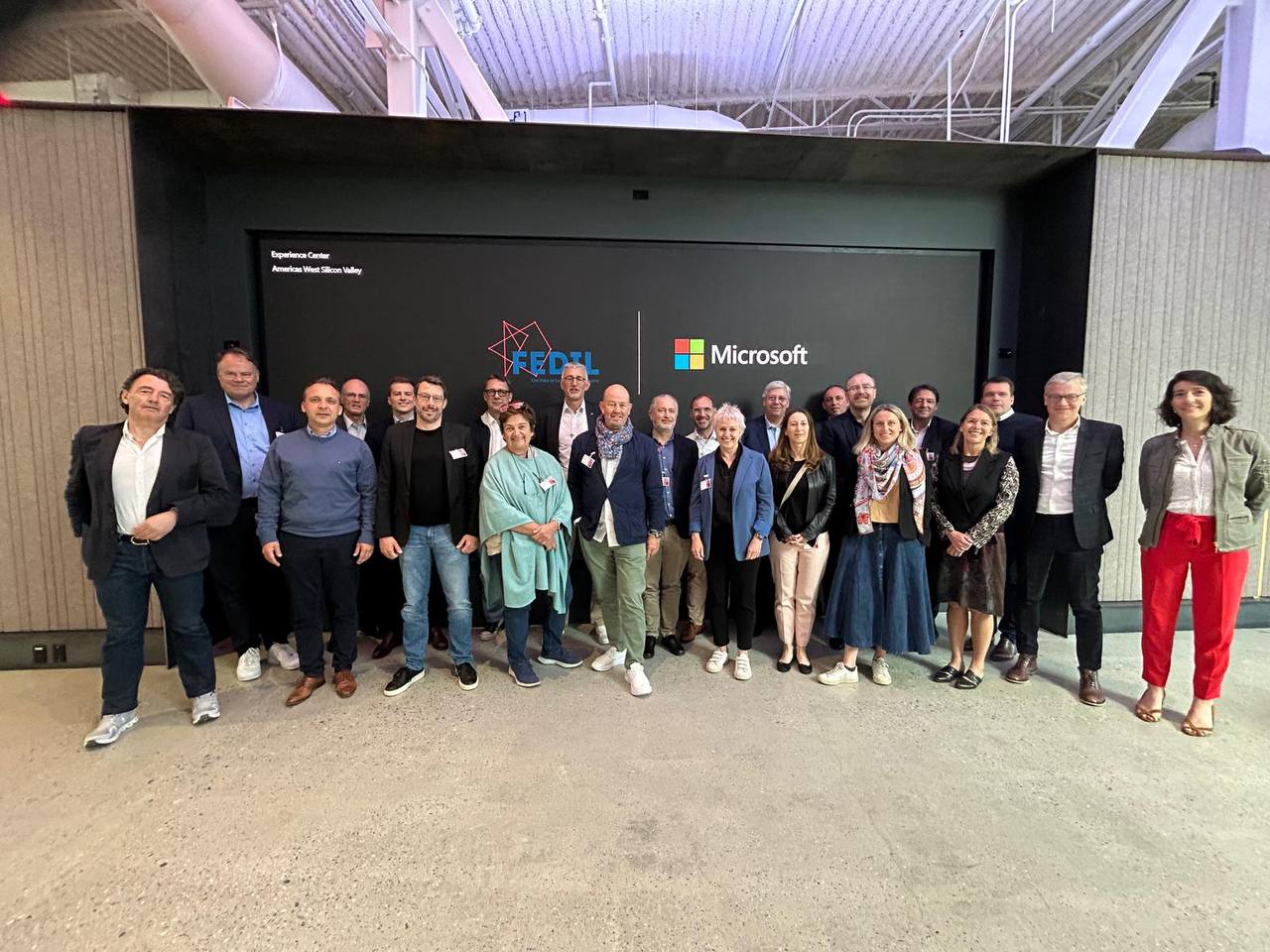
The delegation visited the Microsoft Technology Center, strategically located in the heart of Silicon Valley, close to key clients and partners including Stanford University. The visit was the occasion to get an overview of Microsoft’s innovation and strategic initiatives under the leadership of CEO Satya Nadella. He has driven a significant cultural shift within the company, embodied in the mission statement: “Empower every person and every organization on the planet to achieve more.”
Microsoft has invested heavily in its cloud infrastructure and security. The company’s Azure services, launched a decade ago, have expanded to 60 regions with more than 300 data centers worldwide. Microsoft boasts the largest global fiber network and 200 peering points, ensuring extensive reach and local presence. A strong emphasis is placed on the security and compliance of these data centers.
AI, particularly Generative AI, is a significant investment area for Microsoft. The collaboration with OpenAI and the development of Copilot are examples of this commitment. Introduced last year, Copilot integrates with all Microsoft platforms, enhancing user experience both at work and at home.
Microsoft is deeply committed to sustainability as well. The company’s ongoing investments and initiatives reflect this dedication.
To ensure GDPR compliance, Microsoft has implemented the EU Data Boundary project, which ensures that data for European clients is stored within Europe.
Microsoft is at the forefront of integrating AI into every aspect of business operations. The company believes that AI can transform internal functions, processes, and the delivery of goods and services. To fully leverage AI, organizations must understand how it works and develop a strategic approach to becoming AI-powered.
The Copilot AI assistant integrates with all Microsoft surfaces, understanding user context across the web, PC, work, and home. Copilot for M365 combines Large Language Models (LLM) with Microsoft Graph (data, emails, chat, files) and web data, making it a powerful tool. Built on a comprehensive approach to security, compliance, privacy, identity, and responsible AI, Copilot is enterprise-ready.
The delegation was given live demonstrations of Copilot’s capabilities, including commercial data protection. Interactions with Copilot are secure, with data remaining within the tenant boundary and not used to train the OpenAI foundation model.
The visit to the Microsoft Technology Center highlighted the company’s extensive investments in AI, cloud infrastructure, and security, as well as its commitment to data privacy. The delegation gained valuable insights into Microsoft’s innovative tools and strategic approach to transforming organizations into AI-powered entities, enhancing productivity, creativity, and overall business processes.
Stanford University
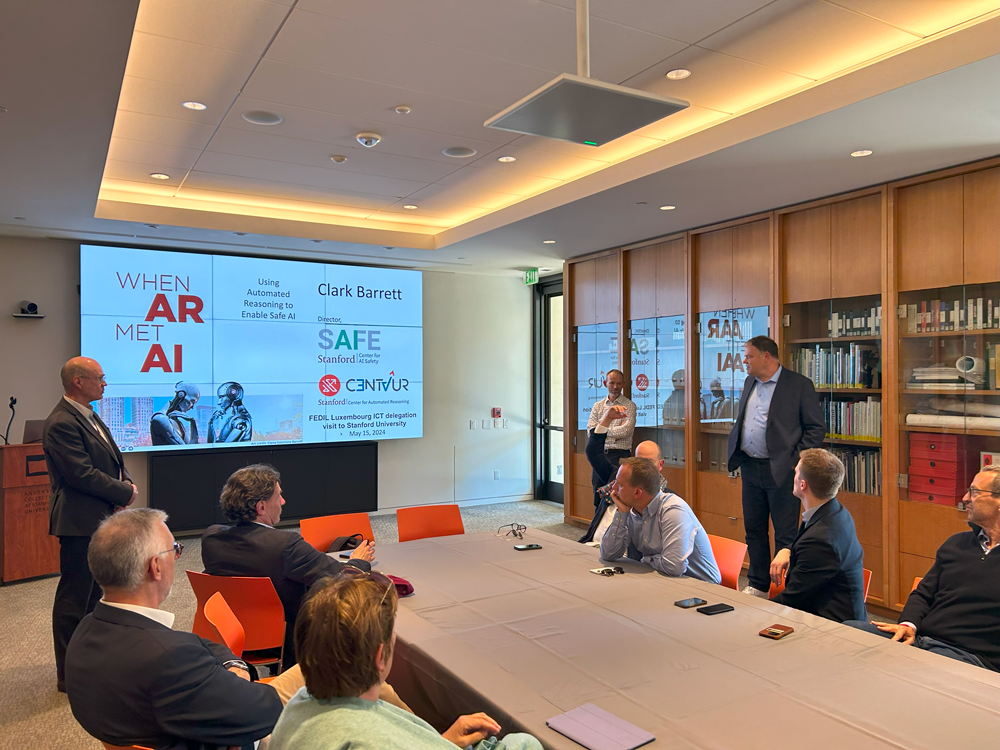
One of the highlights of this year’s study trip was the session held at Stanford University. Professor Clark Barrett, Director of the Stanford Center for AI Safety (SAFE) and the Stanford Center for Automated Reasoning (CENTAUR), delivered an insightful talk entitled « When AR met AI: Using Automated Reasoning to Enable Safe AI. »
Professor Barrett began by explaining the missions of the two centers he directs. The Stanford Center for AI Safety is dedicated to developing rigorous techniques for building safe and trustworthy AI systems, establishing confidence in their behavior and robustness, and thereby facilitating their successful adoption in society. The Center for Automated Reasoning focuses on accelerating state-of-the-art research in Automated Reasoning by developing new theories and algorithms, building world-class tools, and creating automated reasoning-based solutions to real-world problems.
He elaborated on the concept of Automated Reasoning (AR) and described it as automated deduction-essentially, having computers perform complex mathematical tasks. AR has proven to be highly effective, particularly in analyzing and verifying computer systems to ensure that they are safe, secure, and correct.
The intersection of AI and AR was a key theme of the talk. While Artificial Intelligence (AI) is increasingly used in various domains, it often lacks correctness guarantees, leading to potential issues such as adversarial input and hallucinations. Automated Reasoning, on the other hand, aims to provide these necessary correctness guarantees.
By highlighting several use cases where AR is applied to AI systems, Professor Barrett showed that AI is a powerful tool that requires checks and balances to ensure that it is used safely and responsibly. And it is precisely Automated Reasoning that can provide the necessary correctness guarantees, making it a crucial component of the Responsible AI toolkit.
The session concluded with a roundtable discussion with Professor Barrett, Professor Dan Boneh, and Professor Stephen Boyd. They delved deeper into the integration of AR and AI, exploring the challenges and future directions for research and application.
Overall, the session at Stanford University provided the delegation with valuable insights into the cutting-edge advances in AI safety and automated reasoning and highlighted the importance of rigorous verification techniques in the development and deployment of AI technologies.
OpenAI
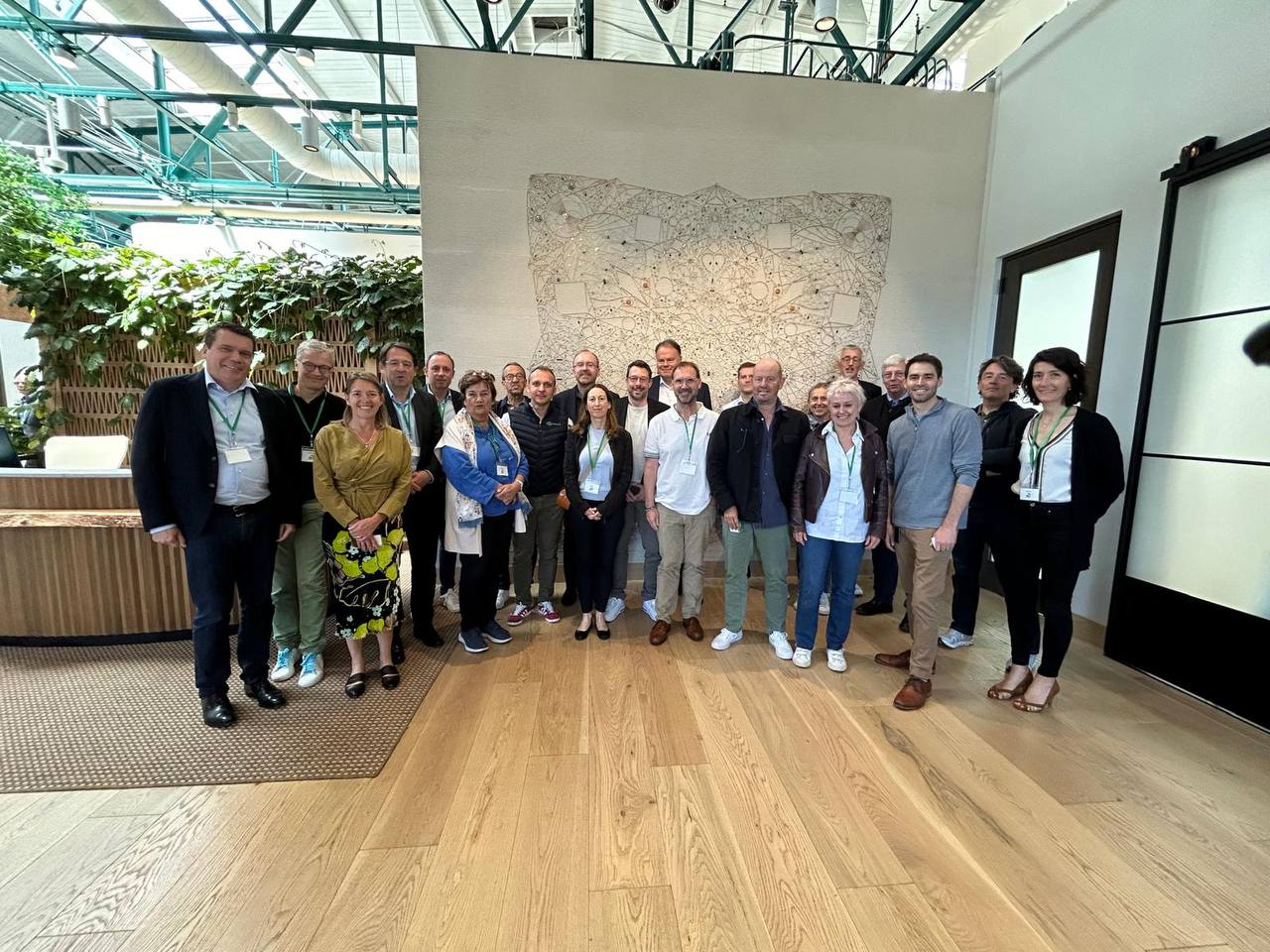
The delegation concluded their trip with a visit to OpenAI, housed in loft-style premises in the heart of the city. At the time of the visit, ChatGPT-4.o had just been launched earlier that week.
The launch of ChatGPT on November 30, 2022, that was initially intended to be a quiet launch primarily targeting researchers, unexpectedly reached 100 million users within two months. This rapid growth and an expansion from handling 30 leads per week to 10,000 led to significant internal changes, requiring a complete overhaul of the company’s stack.
OpenAI began as a research lab in 2015, with the ambitious goal of creating AGI (Artificial General Intelligence). This pursuit led to the development of LLMs (Large Language Models). On June 11, 2020, OpenAI released GPT-3 as an API (Application Programming Interface), which was mainly used in copywriting tools such as Jasper. ChatGPT, based on GPT-3,
marked a significant milestone. GPT-4, which completed training in August 2022, is considered one of the most complex pieces of software ever produced, outperforming its predecessor in many ways. GPT-4 has a significant impact on the legal field as it can read and write contracts and interact with data using the Python programming language.
Besides GPT-4, OpenAI has developed other models like DALL-E (text-to-image generation), Whisper (speech recognition model), and an orchestration layer that allows calling APIs to execute tasks.
ChatGPT Enterprise, launched in late 2023, is mostly used in data science, HR, and finance industries. Through advanced data analytics, it can transform data using Python behind the scenes, analyze and visualize data, perform advanced mathematics, carve territories in minutes vs months, understand representatives’ performance.
OpenAI envisions a multi-modal future. The latest innovations include a new model for speech-to-speech interaction without transcription and using voice to engage in back-and-forth conversations with a GPT-4-powered assistant. Vision capabilities are also being enhanced, allowing the assistant to act as a math tutor for students. The delegation was shown how advanced text and image capabilities can be used to rapidly prototype and test ideas for 3D object rendering. On the video side, the latest model, Sora, creates realistic and imaginative scenes from text instructions.
The key OpenAI collaboration areas are the following:
- Build an AI-enabled workforce: Organizations are starting with this because it offers significant productivity gains by enabling the employees to perform tasks more effectively. This reduces task time and frees employees for other value-added tasks. It involves putting an AI policy in place, training employees, and giving access to company information and guidelines. ChatGPT Enterprise can process and create new products based on this context.
- AI-automated operations: The model can start acting independently with knowledge of company policies and processes. An AI assistant handles low-level tasks, while an AI agent can escalate more complex issues to a human. This is highly effective in customer service, such as the global payment solution provider Klarna, which handles a large volume of tickets with the option to escalate advanced tasks to human agents.
- Infusing AI into products: Customize models for specific domains, such as Harvey, which is trained on a corpus of legal information to provide relevant outputs for lawyers based on case law.
For OpenAI, there are five principles for successful AI strategies:
- Equip the team with AI: Ensure that the access to AI tools is extended to every department within an organization. Empowering the people closest to the business with these tools often leads to best and most innovative ideas. Research and surveys conducted by OpenAI have shown that providing access to AI tools like ChatGPT saves time and increases work efficiency. Employees report feeling more creative, innovative, and supported. A prime example of this principle in action is OpenAI’s partnership with the pharmaceutical and biotechnology company Moderna. OpenAI has containerized the data, so that it could not interact with any training pipelines. This approach addresses concerns about the intellectual property (IP) created by using the model and ensures that proprietary data remains secure.
- Enablement: Ensure that every employee can seamlessly integrate AI into their work and become an educated user of the technology. OpenAI facilitates this through a customized onboarding process, that guide users from initial preparation to full deployment. This process includes the use of metrics to evaluate engagement and measure the impact of AI integration, ensuring that the technology is effectively adopted and used across the organization.
- Operationalize: « Operationalize » involves integrating and applying AI technologies into the core business processes and daily operations across various business units. This ensures that AI becomes an integral part of the organization’s workflow and enhances efficiency and productivity on a daily basis.
- Innovate: The fourth principle is « Innovate with AI, » which involves creating unique AI solutions tailored to leverage specific strengths. Innovation occurs when an organization customizes AI models to its specific business needs. Examples of this include global payment solution provider Klarna and legal AI platform Harvey.
- Partner: Leverage OpenAI’s expertise to enhance capabilities.
The session concluded with the question of how OpenAI engages with higher education and government institutions. In the education environment, identifying user personas (staff, faculty, students) and core use cases (teaching and learning, campus operations, research) is key to adapting GenAI tools to the context.
In summary, the delegation left with a clear understanding of OpenAI’s innovations, strategic approach, and potential for collaboration in building AI-enabled workforces, automating operations, and integrating AI into products. They also recognized how OpenAI’s advances can transform various industries and drive future growth.